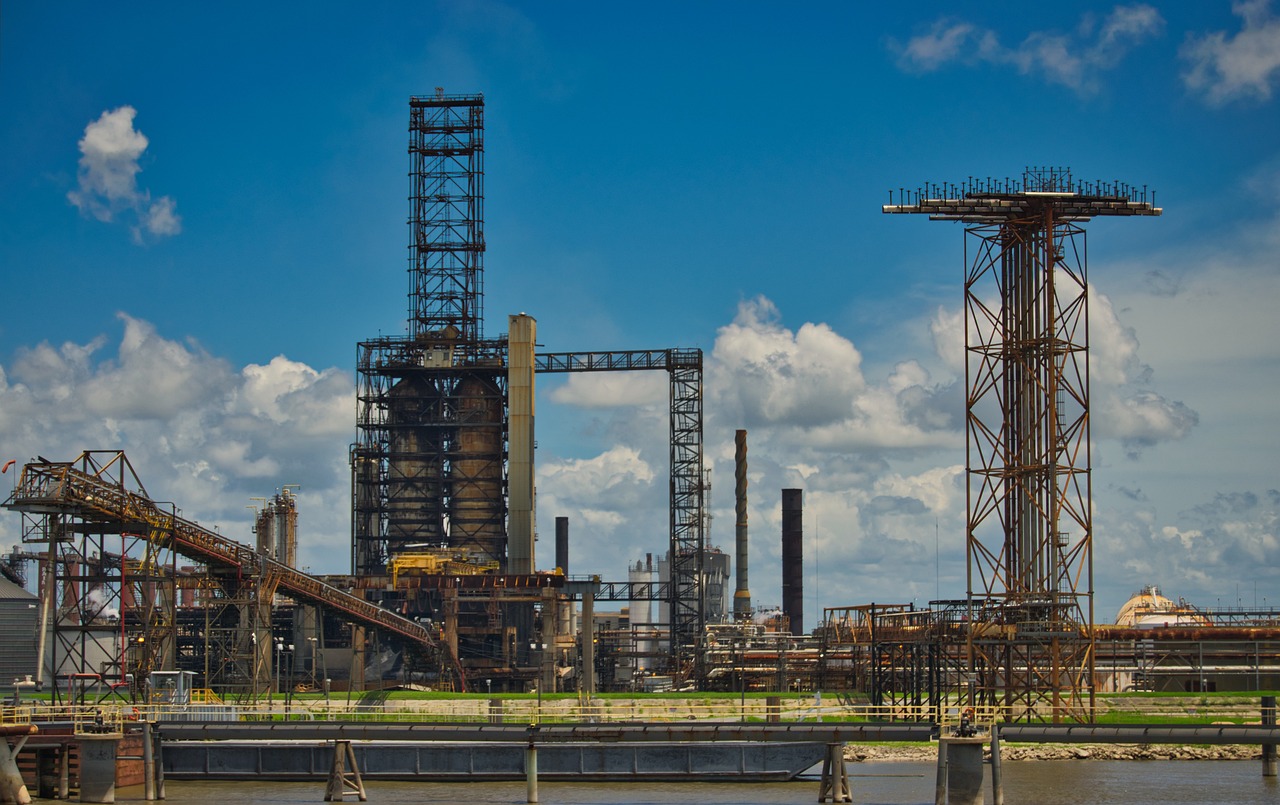Monitoring Air Pollution from Oil and Gas Operations with TEMPO

Oil refineries and other oil and gas facilities release fossil fuels and other pollutants during operation. TEMPO will help us to accurately detect and measure the chemicals these oil and gas facilities release into the air.
© Thomas H/Pixabay.
Probing the Connection Between Fossil Fuels and Air Quality
In Jurassic Park, scientists bring ancient creatures back to life from fossils buried deep underground. They are intended for amusement, but they end up causing death and destruction. In a similar fashion, when we dig up oil and gas from the Earth, we harness these ancient materials as fuels, but using them comes with many side-effects, including air pollution. The space-based sensor TEMPO will help us understand what chemicals these oil and gas operations release into the air. Its high temporal and spatial resolution data will help scientists, policymakers, and communities make informed decisions and take effective action to mitigate the harmful effects of fossil fuel-related emissions.
The Hidden Dangers of Fossil Fuels
Oil and gas are composed of fossilized organic materials formed from ancient plants and animals. While these fossil fuels provide us with valuable energy resources, their extraction and processing also release substances that can severely impact air quality. One such class of substances is volatile organic compounds (VOCs). These compounds easily evaporate at room temperature and mix with oil and gas as they are pumped to the surface. As oil and gas are extracted from the earth, transported, and processed, VOCs can escape and cause adverse health effects in nearby communities. For example, that distinct smell at a gas station is the smell of VOCs evaporating from the gasoline you are pumping into your car's tank.
Among TEMPO’s many objectives, it will provide crucial data on VOC emissions from the oil and gas sector. VOCs like cancer-causing formaldehyde not only impact human health directly, but they can also trigger complex chains of chemical reactions that further deteriorate air quality. TEMPO will detect and measure many of these chemical byproducts, particularly ground-level ozone and particulate matter (PM), which are known to cause respiratory diseases. Ozone levels usually rise when the weather is warm, but under certain conditions, oil and gas operations can lead to high ground-level ozone concentrations even in the winter. By measuring these emissions hourly during the daytime and at spatial resolutions of around four square miles, TEMPO will help us to connect these fluctuations in ground-level ozone to specific industrial activities.
Impacts of Oil and Gas Operations on Climate Change
TEMPO and other space-based tools can be used to monitor several greenhouse gases released from oil and gas operations. Besides ozone, which strongly warms the atmosphere, TEMPO can detect nitrogen dioxide (NO2), another compound that reacts with VOCs to form even more ozone. When oil and gas are burned, NO2 gets released alongside carbon dioxide, another potent greenhouse gas, meaning scientists can also infer the presence of CO2 from the presence of NO2. Meanwhile, other space-based sensors, like MethaneSat, will be able to monitor methane, another greenhouse gas released from oil and gas operations. Altogether, the continuous, high-resolution monitoring from TEMPO and other satellites will enhance our understanding and management of all the major greenhouse gases emitted from the oil and gas industry.
A Sustainable Path Forward
The insights gained from TEMPO's data will not only enable state and national governments to act against poor air quality, but also allow them to attribute air quality issues directly to oil and gas operations. This crucial information can inform the development of new regulations and emission reduction strategies tailored to address the specific impact of the fossil fuel industry on air pollution as well as on climate change. The mission serves as a powerful reminder of the need to transition towards cleaner, sustainable energy sources. As we continue to grapple with the global challenge of climate change and air pollution, TEMPO provides crucial information to protect our environment and safeguard public health, and an opportunity to build a healthier shared future for us all.